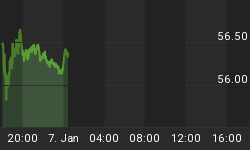I attended this year's New Orleans Investment Conference along with Doug Casey, Marin Katusa, and Casey Research's CEO, Olivier Garret. It was fun to see many old friends among the attendees and other speakers, but the most interesting thing was an experiment I conducted as part of my speech.
You see, there had been a talk earlier in the conference on picking "ten-baggers" (stocks that go up 1,000%). Now, there's nothing wrong with shooting for ten times your investment in a highly volatile stock. It's neither a crazy nor a hyped-up claim - we've had many ten-baggers in our portfolios, including Silver Wheaton (SLW) and First Majestic (AG). But it's not easy, and many of the nano-cap stocks that offer that sort of potential do the opposite and drop 90% - if not all the way to zero.
So I asked the audience to raise their hands if they wanted ten-baggers in their portfolios. About three-fourths of the audience put their hands up. I didn't take time to count the hands, but it was a lot of people - several hundred.
I then explained the realities involved:
- Big, stable, safe companies - almost by definition - do not offer ten-bagger potential.
- Nobody can tell you in advance which tiny, high-risk play is going to be the next ten-bagger. The best one can do is identify a "basket" of stocks with ten-bagger potential, and hope the ones that work out more than cover the losses on the ones that don't.
- The people who make money using this strategy understand that they will lose money on most of their stocks. Let me repeat that: to go for ten-baggers, you must accept that more of your stocks will lose money than will make you money.
- The math is simple: you can lose 100% of your money on a high-risk stock, but you can only lose 100% - while there is no maximum gain.
So, yes, ten-baggers are possible. Some highly-volatile junior stocks go 50 to 100 to one. (GoldQuest Mining, V.GQC, is a recent example of a 50-bagger.) So, the strategy for pursuing ten-baggers is to buy ten exceptionally high-volatility stocks, write off the three that go to zero, shrug off the three that drop 30% or 50%, accept the three that gain 30% to 50%, and laugh all the way to the bank when the one long shot goes up 1,000% and more than makes the rest worthwhile.
But if you do this, you must realize that until the ten-bagger makes its discovery, transition, or whatever it's going to do to shoot through the roof, it's going to look like any of the other mediocre or losing positions. (Only in this context can 30% to 50% gains be considered mediocre - and we do, here at Casey Research.)
In other words, you have to have nerves of steel to do this, or you'll panic and sell all your "idiotic penny stocks" and wonder what lapse of sanity ever prompted you to buy them. We've seen this again and again.
I have to wonder how sick to the stomach those who sold GoldQuest at four cents a couple months ago must have felt when they saw the stock shoot up to over $2 on a fantastic new gold discovery in the Dominican Republic.
After explaining these things to the audience and stressing again that the only way to reliably go after ten-baggers is to accept that one will have more losses than wins (and the wins will more than make up for the losses), I asked for another show of hands.
I kid you not: about three people raised their hands.
This confirms something I had long thought, but for which I had not previously had empirical evidence: most people don't have what it takes to be high-stakes speculators. Fair enough - if an investing strategy does not suit one's temperament, one should not try it.
But fortune does favor the bold.
Fear not; I would never try to twist anyone's arm to buy high-risk stocks. I only pursue this strategy with a small number of alert-service subscribers who understand the math and have the temperament to go with it. That service is on a waiting list at present , because seats are strictly limited.
So now you know; the high-stakes table is not for everyone - and that's okay. There are different ways to invest, and every investor should carefully assess his or her temperament - and especially tolerance for risk - before settling on his or her investment strategy.
I hope you will all do this important introspection and determine the right strategies to pursue in the volatile and - we're convinced - highly profitable times ahead.















